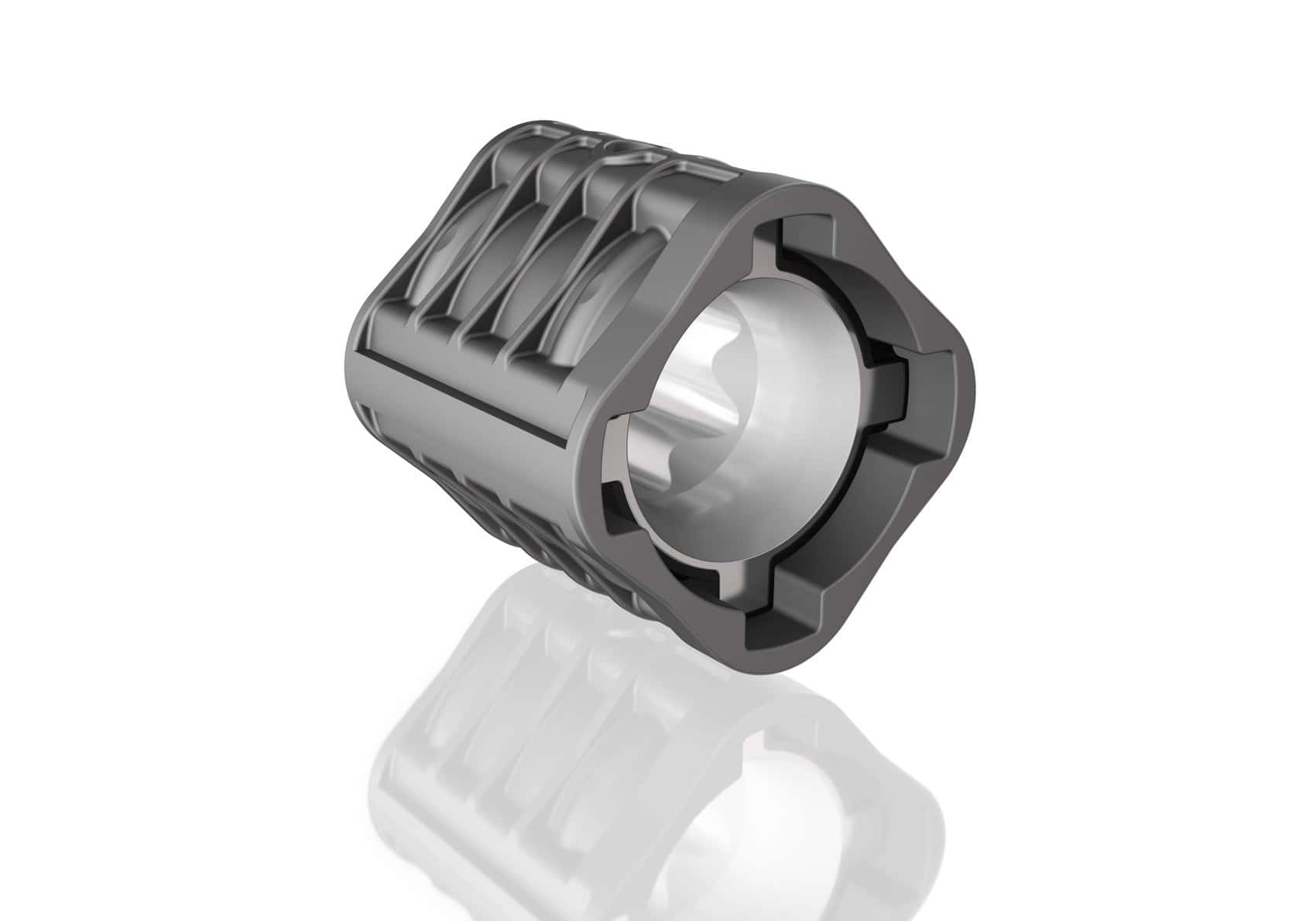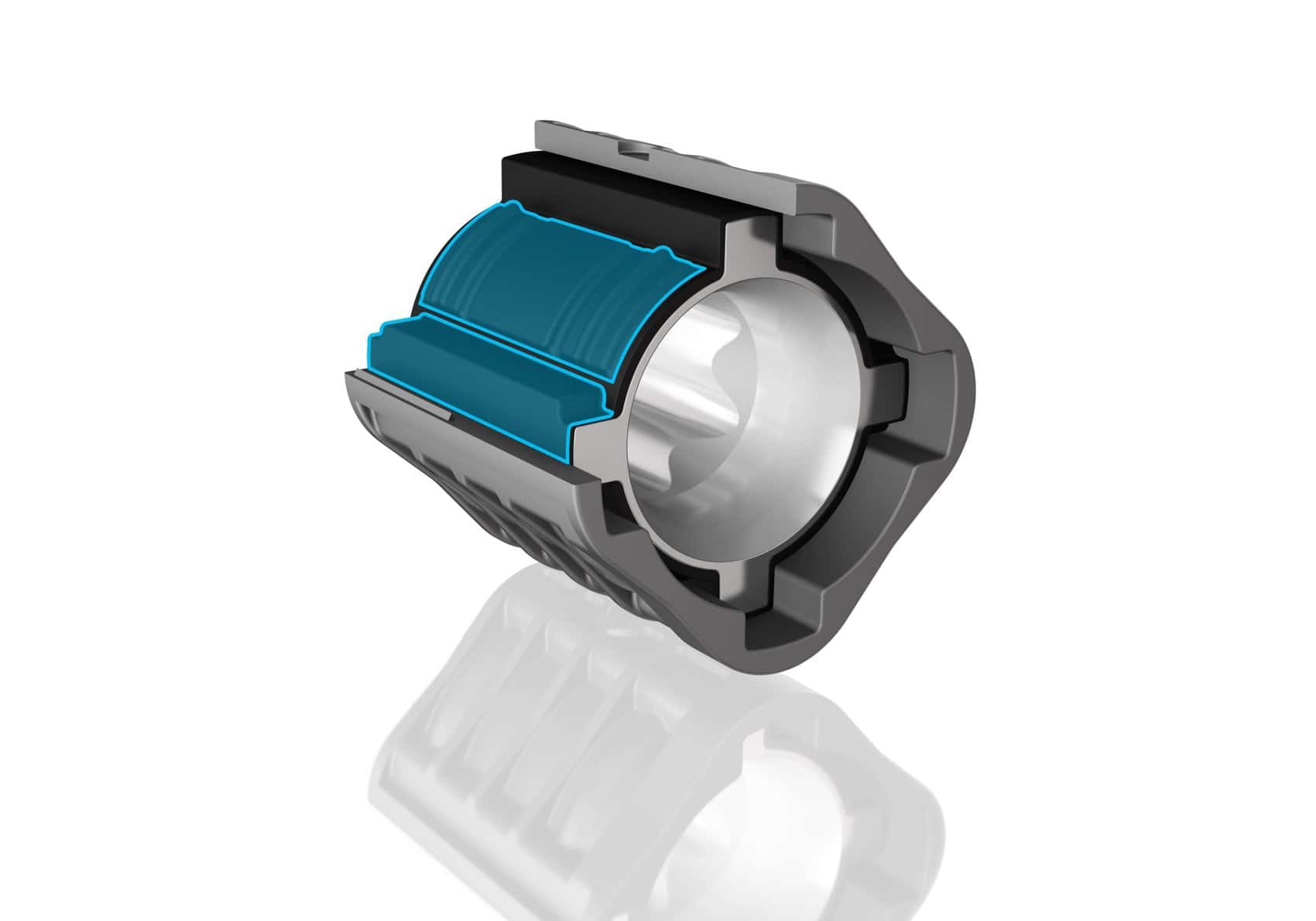Darmstadt, 12. November 2019 |
Innovative Vibracoustic decoupling prevents unwanted steering wheel vibrations
Preventing unwanted vibrations is crucial to provide great driving comfort and secure a relaxed and safe ride. To address those unwanted vibrations in the steering wheel, Vibracoustic, a leading supplier for automotive NVH (Noise, Vibration and Harshness) solutions, has developed an innovative steering column bushing. It is optimized towards reducing vibrations in comparison to conventional hardy disc decouplers. It provides stronger isolation in all driving situations and is lighter, more compact and sustains its beneficial technical characteristics throughout the whole vehicle lifetime.
When it comes to isolating torsional vibrations, for a long time a conventional hardy disc decoupler was the product of choice for engineers: It can transfer great torque and has good isolating characteristics but comes with downsides. Due to its radial construction, the outer diameter is big, which takes up a lot of design space. In areas like the steering column, this negatively affects the legroom of the driver. Furthermore, being built by a combination of different cord packages for the torsional vibrations in both directions, the cords are getting softer over time, which decreases the direct steering behavior.
Vibracoustic steering column decoupling
To provide even better isolating characteristics and to overcome the downsides of conventional hardy discs, Vibracoustic engineers developed an innovative steering column bushing. The compact shape provides significantly more design space, as the radius is only around half of that of a hardy disc. The creative design furthermore features an elastomer layer around the aluminum core, providing exemplary high isolation in push and pull direction (low axial stiffness), i.e. towards or away from the driver.
In contrast, the radial stiffness needs to be high to provide a direct steering feel and secure optimized handling of the vehicle. Nevertheless, small vibrations should also be isolated, as otherwise the steering wheel would shake the whole time causing an uncomfortable feeling.
The whole bushing is highly robust and durable, and the decrease in stiffness is as low as 10% over lifetime – also being superior to other conventional solutions which experience a much bigger drop in stiffness during their lifetime. While neither a hardy disc nor a cardan joint can resist coning, the Vibracoustic steering column bushing also prevents buckling of the steering column due to its high conical stiffness, given its compact construction.
Precisely fine-tuned elastomer geometry possible
To strike the balance between these contradicting demands, the Vibracoustic engineers integrated a radial progression into the component, which can be precisely tuned by the geometry of the elastomer around the aluminum core. If the steering force reaches a specific level, the coupling stiffens up and transmits the full force to the steering column, turning the wheels in the needed direction. For example, if the driver steers towards a curb, the steering feel first needs to be soft, in case the curb was just touched by fault. But if the car is supposed to go over the curb, a threshold is needed, when the steering gets stiff and the car does what the driver wants it to do. This progressive behavior can be precisely tuned by the elastomer geometry – something which is not possible with other conventional solutions.
Ultrasonic welding enables highly flexible elastomer geometry
The good tunability of the elastomer geometry is achievable since its outside geometry is fully accessible during vulcanization. Thus, the outer elastomer geometry is only limited by mold constraints. After vulcanization, two plastic outer shells are welded together by ultrasonic vibrations, once the outer shells are laid over the core and the elastomer layer. Thus, a stopper system can be integrally formed to easily tune the progression behavior.


